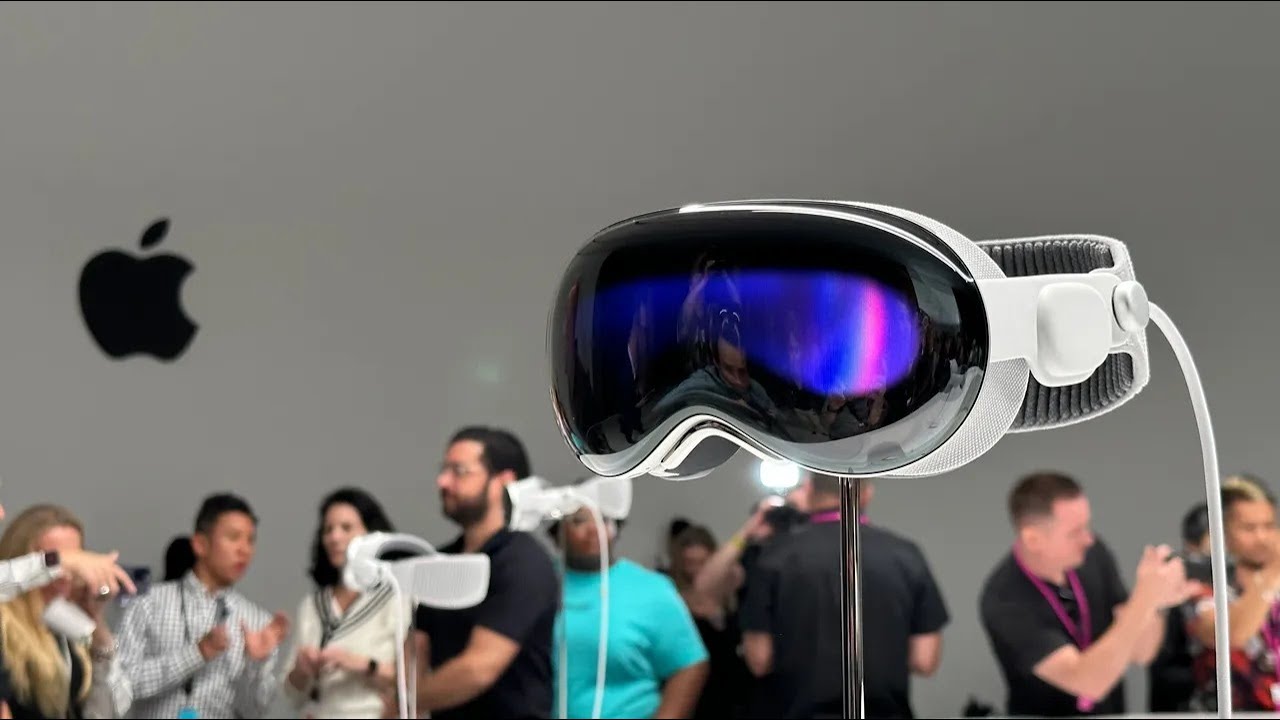Apple Unveils VisionBand: AI Wearable Assistant That Could Change Everyday Tech

What Just Happened?
On June 25, 2025, Apple officially introduced the VisionBand, a slim, wrist-worn device that functions as a standalone AI assistant. Unlike traditional smartwatches, the VisionBand is built entirely around voice and gesture-based interaction. It doesn’t need to be connected to a phone, and it runs on a lightweight version of VisionOS, the operating system behind Apple Vision Pro.
This is Apple's boldest move yet in wearable technology. The VisionBand aims to replace not just watches or phones, but also virtual assistants, health trackers, and even parts of your laptop.
How Does VisionBand Work?
The VisionBand features an ultra-lightweight flexible display that wraps partially around the wrist. It includes advanced sensors for motion, pulse, hydration, and even real-time blood sugar tracking. But its main feature is a custom-built AI assistant called "Iris", which interacts with you through natural speech and subtle projections.
Key features include:
- Voice-first AI interaction with personalized memory
- Hand-tracking gestures for controlling apps in the air
- Integration with Apple ecosystem: Mac, iPhone, HomeKit, and Vision Pro
- Secure on-device processing for privacy
- Ambient screen that adapts to lighting and gestures
- Health insights with daily reports and alerts
- Optional projection mode that can display content on any flat surface
Why Is It Different from a Smartwatch?
Apple made it clear that VisionBand is not an Apple Watch replacement. It doesn’t show you the time by default and doesn’t run WatchOS apps. Instead, it’s designed as a proactive assistant that helps manage your schedule, respond to messages, track health, and even help with work tasks.
For example, you can say, “Summarize my emails,” and Iris will read out or display short summaries. You can gesture above the band to scroll through reminders. If you’re in a meeting, the band can vibrate silently to notify you of important updates, and you can glance at a hidden screen by turning your wrist.
Focus on AI and Privacy
Apple emphasized that VisionBand is privacy-first. All personal data stays on the device by default. No data is sent to the cloud unless you allow it. Apple’s new AIPU (AI Processing Unit) handles all computations locally, including voice processing, task summarization, and contextual reminders.
This sets it apart from competitors like Meta or Google, which rely heavily on cloud computing and external servers to process user data.
What Is the Target Audience?
Apple is clearly aiming VisionBand at two types of users:
- Professionals and Productivity-Focused Users:
Those who need hands-free assistance throughout the day. Writers, business people, students, and multitaskers.
- Health and Wellness Enthusiasts:
It provides continuous health tracking, stress monitoring, and fitness coaching without needing to check a screen constantly.
Apple said VisionBand is not meant for passive use. It’s a tool for people who want to work faster, move more freely, and stay connected without being distracted by screens.
How Much Does It Cost?
VisionBand will start at $799 and will be available in select markets starting in August 2025. Models with cellular connectivity and premium sensors (like non-invasive glucose monitoring) will cost up to $1099.
Apple is also launching a subscription tier called Iris Pro, offering deeper AI personalization, memory syncing across devices, and integration with Apple Mail, Calendar, and third-party productivity apps.
Reactions from Industry and Public
Reactions to VisionBand have been mixed, but mostly positive.
- Tech reviewers praised the clean UI and smooth gesture controls, calling it Apple’s most futuristic product since the iPhone.
- Developers are excited about the new VisionKit SDK that allows them to build apps specific to the VisionBand interface.
- Some critics raised concerns about accuracy of gesture detection in crowded environments or while moving fast.
However, Apple's promise of fully local AI and privacy-first design is already drawing praise from data rights advocates.
What About Competition?
Meta has its Ray-Ban AI glasses. Google is working on its Pixel Ring. Amazon is still experimenting with Echo-based wearables. But none of them offer the same blend of health tracking, private AI, and gesture control in a single device.
Apple may have entered late into the AI wearable race, but VisionBand could leap ahead if the software experience proves as smooth as advertised.
What Comes Next?
Apple plans to release new updates to VisionOS every six months, adding features like language translation, AI-powered coaching, and deeper health integration.
Developers will get access to the VisionBand SDK starting next month, which means third-party apps are likely coming by early 2026.
There are also rumors of a VisionBand Pro in the works with AR hologram projection, but Apple has not confirmed anything yet.
What You Should Know
- VisionBand is not just a new Apple device. It’s a sign that AI-first wearables are the future of mobile tech.
- The device focuses on minimal screen time, natural gestures, and proactive assistance.
- It may not be for everyone, but for early adopters and productivity-focused users, it offers something new and powerful.
The Bottom Line
Apple’s VisionBand might be the beginning of a new era where screens matter less, and smart assistants become more natural, helpful, and invisible. Whether this device becomes the next iPhone or just a stepping stone, it shows that Apple is serious about combining AI, hardware, and privacy into something that could truly change the way we interact with technology.